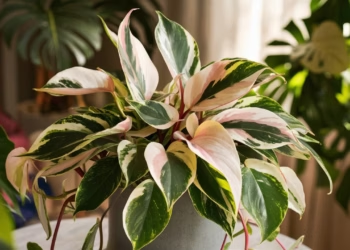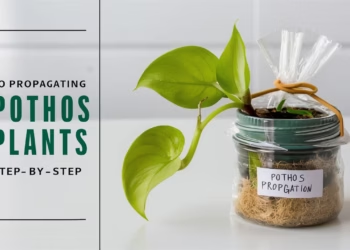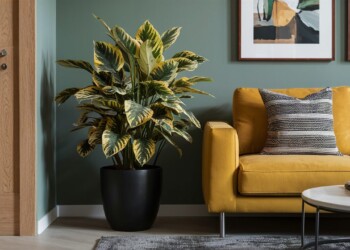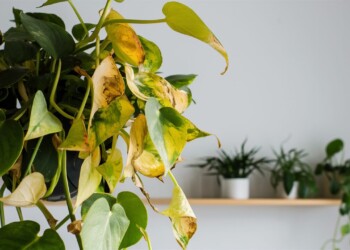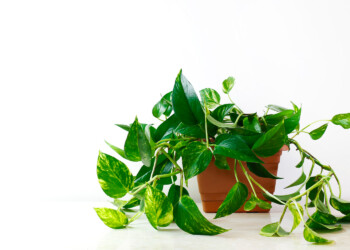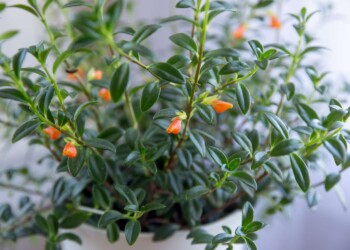Philodendron Birkin, with its striking variegated leaves and easy-care nature, has become a must-have for indoor plant enthusiasts. Whether you’re a seasoned plant parent or just starting, understanding the basics of Philodendron Birkin care can help you keep this beautiful plant thriving. In this guide, we’ll walk you through everything you need to know, from its history to troubleshooting common issues. Let’s dive in and discover the secrets to nurturing your Philodendron Birkin!
Overview of Philodendron Birkin
History and Origin
Philodendron Birkin is a relatively new and trendy cultivar that has quickly captured the hearts of plant lovers. This unique plant is a mutation of Philodendron ‘Rojo Congo,’ which originated in South America. Its stunning variegation and ease of care make it a popular choice for both novice and experienced gardeners.
Unique Features
What sets the Philodendron Birkin apart are its eye-catching leaves. Each leaf is a masterpiece, showcasing a combination of dark green and creamy white stripes. The variegation pattern can vary, making each plant truly one-of-a-kind. Additionally, the Birkin’s compact size and bushy growth habit make it an excellent choice for indoor spaces.
Ideal Growing Conditions
Light Requirements
Philodendron Birkin thrives in bright, indirect light. Too much direct sunlight can scorch its leaves, while insufficient light can result in leggy growth and loss of variegation. Place your plant near a window with filtered light or use sheer curtains to protect it from harsh rays.
Temperature and Humidity
These tropical beauties prefer temperatures between 65°F and 80°F. They don’t do well in cold drafts or sudden temperature changes, so keep them away from windows and doors during winter. As for humidity, Philodendron Birkin enjoys higher humidity levels. A humidity range of 60-70% is ideal, but they can adapt to average indoor humidity levels with some extra care.
Soil Preferences
A well-draining, airy soil mix is essential for Philodendron Birkin. You can use a mix of potting soil, perlite, and orchid bark to ensure good drainage and aeration. This prevents waterlogged roots and helps the plant absorb nutrients more effectively.
Watering Needs
Frequency of Watering
Philodendron Birkin prefers to be kept on the drier side compared to other tropical plants. Water your plant when the top inch of soil feels dry to the touch. Overwatering can lead to root rot, while underwatering can cause the leaves to curl and brown. Finding the right balance is key.
Signs of Overwatering and Underwatering
- Overwatering: Yellowing leaves, mushy stems, and a foul smell from the soil.
- Underwatering: Brown, crispy leaf edges, wilting, and dry soil.
If you notice these signs, adjust your watering schedule accordingly to keep your plant happy and healthy.
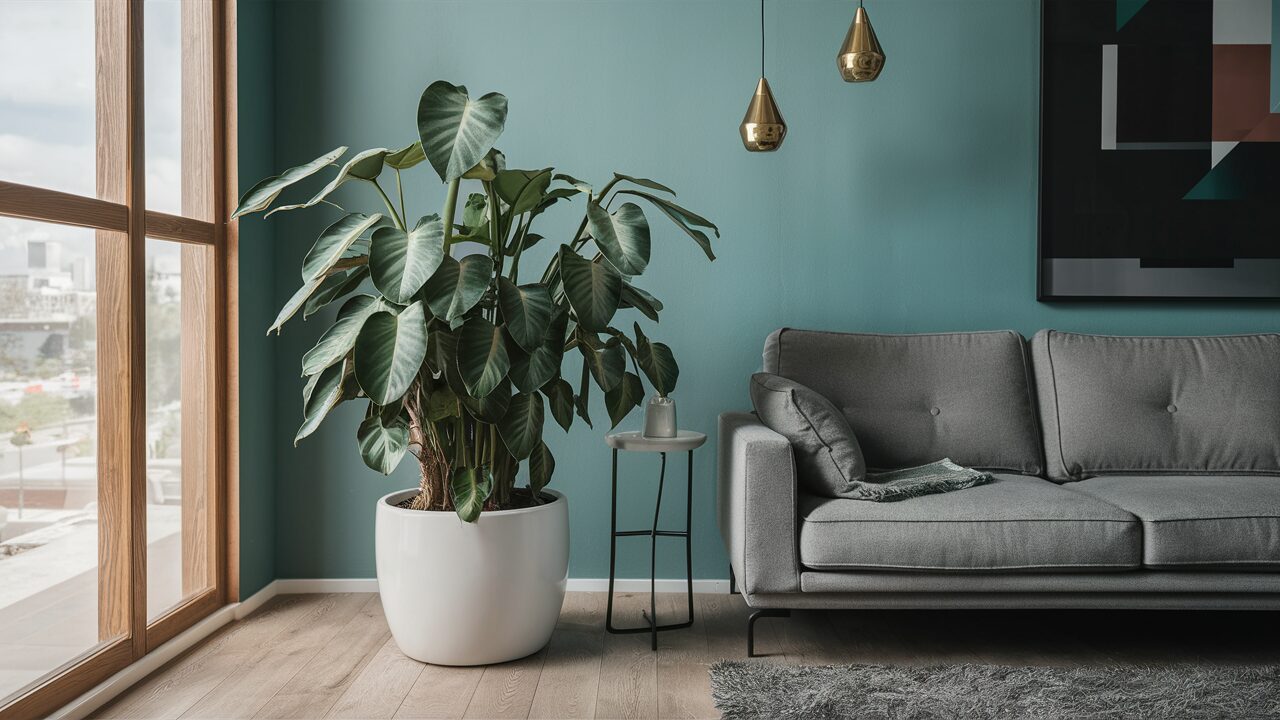
Fertilization
Type of Fertilizer
Philodendron Birkin benefits from regular feeding during the growing season (spring and summer). Use a balanced, water-soluble fertilizer with an N-P-K ratio of 20-20-20 or similar. Dilute the fertilizer to half the recommended strength to avoid over-fertilizing.
Fertilizing Schedule
Feed your plant every 4-6 weeks during the growing season. In the fall and winter, reduce the frequency to once every 8-10 weeks, as the plant’s growth slows down. Always follow the manufacturer’s instructions for the best results.
Pruning and Maintenance
How to Prune
Pruning helps maintain the shape and health of your Philodendron Birkin. Use clean, sharp scissors to trim any yellowing or damaged leaves. Regular pruning encourages bushier growth and prevents the plant from becoming too leggy.
Cleaning the Leaves
Dust can accumulate on the leaves, hindering photosynthesis. Gently wipe the leaves with a damp cloth or use a gentle shower to keep them clean and shiny. This also helps prevent pests from taking up residence on your plant.
Repotting Philodendron Birkin
When to Repot
Philodendron Birkin generally needs repotting every 1-2 years, depending on its growth rate. Signs that your plant needs a bigger pot include roots growing out of the drainage holes and soil drying out quickly after watering.
How to Repot
- Choose a pot that’s one size larger than the current one.
- Carefully remove the plant from its old pot, gently shaking off excess soil.
- Place the plant in the new pot, filling in with fresh soil mix.
- Water thoroughly and place the plant back in its preferred spot.
Common Pests and Diseases
Identifying Pests
Common pests that can affect Philodendron Birkin include spider mites, aphids, and mealybugs. Regularly inspect your plant for any signs of pests, such as tiny webs, sticky residue, or small insects on the leaves.
Treating Diseases
If you notice signs of disease, such as leaf spots or powdery mildew, isolate the affected plant to prevent the spread. Treat with appropriate fungicides or insecticidal soap, and ensure your plant has proper air circulation to reduce humidity.
Propagation Methods
Propagation by Stem Cuttings
- Select a healthy stem with at least two leaves.
- Cut just below a node using clean scissors.
- Place the cutting in water or directly into moist soil.
- Keep in a warm, humid environment until roots develop.
Propagation by Air Layering
- Choose a healthy stem and make a small cut.
- Wrap the cut area with moist sphagnum moss.
- Cover with plastic wrap and secure with tape.
- Once roots form, cut the new plant from the parent and pot it separately.
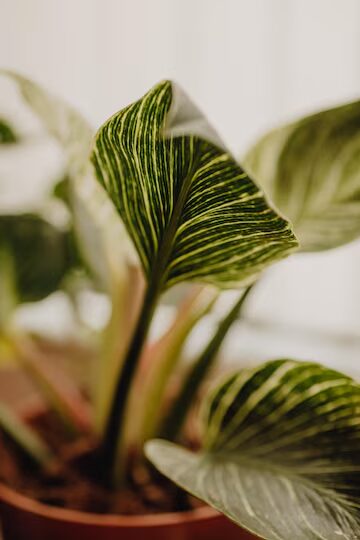
Troubleshooting Common Problems
Yellowing Leaves
Yellowing leaves can be caused by overwatering, underwatering, or nutrient deficiencies. Check your watering schedule and ensure your plant is getting the right amount of light and nutrients.
Brown Leaf Tips
Brown tips are often a sign of low humidity or inconsistent watering. Increase humidity around your plant and ensure it’s watered regularly but not overwatered.
Benefits of Philodendron Birkin
Philodendron Birkin not only adds a touch of elegance to your indoor space but also helps purify the air by removing toxins. Its compact size makes it perfect for small spaces, and its low-maintenance nature is ideal for busy individuals.
Decorative Uses
Indoor Display Ideas
- Place your Philodendron Birkin on a stylish plant stand to elevate its beauty.
- Combine with other variegated plants for a striking display.
- Use decorative pots to complement your interior decor.
Pairing with Other Plants
Philodendron Birkin pairs well with other tropical plants like Monstera plant, Pothos, and Calatheas. Their different leaf shapes and colors create a visually appealing indoor jungle.

Philodendron Birkin is a stunning and low-maintenance plant that can brighten up any indoor space. By understanding its care needs and providing the right conditions, you can enjoy this beautiful plant for years to come. Happy planting!
FAQs
How often should I water my Philodendron Birkin?
Water when the top inch of soil feels dry, usually every 1-2 weeks.
Can Philodendron Birkin tolerate low light?
It prefers bright, indirect light but can adapt to lower light conditions.
Why are my Philodendron Birkin’s leaves turning yellow?
Yellow leaves can indicate overwatering, underwatering, or nutrient deficiencies.
How do I increase humidity for my Philodendron Birkin?
Use a humidifier, place a tray of water near the plant, or group plants together to create a humid microenvironment.
When should I repot my Philodendron Birkin?
Repot every 1-2 years or when you notice roots growing out of the drainage holes.
Do philodendron birkins climb?
Philodendron Birkins are not natural climbers. They are self-supporting plants that develop an upright, bushy habit as they mature.
Can Philodendron Birkin grow indoors?
Yes, Philodendron Birkins can grow indoors. They are well-suited to indoor environments due to their tolerance for lower light levels and their visually striking appearance, making them a popular choice for indoor gardening .
How long can philodendron Birkin go without water?
Philodendron Birkins can typically go 1-2 weeks without water. It is important to let the soil dry out between waterings to avoid overwatering.
With this comprehensive guide, you’re now equipped to provide the best care for your Philodendron Birkin. Enjoy the journey of nurturing this beautiful plant and watch it thrive in your home!

